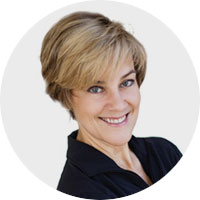Get Easy Health Digest™ in your inbox and don’t miss a thing when you subscribe today. Plus, get the free bonus report, Mother Nature’s Tips, Tricks and Remedies for Cholesterol, Blood Pressure & Blood Sugar as my way of saying welcome to the community!
So you want to lose that menopause weight?

If you’re a woman in peri- or post- menopause and want to lose the weight, particularly the belly fat that’s found you recently, you may be looking for the best exercise options.
Before you hit the treadmill for hours on end or register for the bootcamp that promised to torch calories, read this…
As a midlife woman going through hormone changes, you have a unique set of challenges. Mind you, you are not broken. I repeat; you’re not broken.
You do need something different than the most recent spewing of research on fat burning optimization, however.
You need research that directly pertains to you.
Cortisol levels rise with age and are elevated during menopause. So it’s only natural that during menopause your body is much more susceptible to the negative impact of cortisol.
That makes exercise for women going through menopause tricky. Exercise increases cortisol levels, some exercise more than others.
Short intense bouts of exercise can increase human growth hormone (HGH) and testosterone, and these hormones help you increase lean muscle that boost metabolism. This includes short weight training sessions (ideally twice a week) and short interval training sessions.
Too much of a good thing, however, will backfire on you
What you need as a woman in midlife who wants weight loss is the exercise sweet spot where there is an increase of hormones that play a positive role in supporting lean muscle… and a decrease in the level of hormones, namely cortisol, that encourage fat storage.
Short intense bouts of high intensity interval training (HIIT) are good. Long intense bouts of high intensity interval training begin to increase cortisol levels.
But here’s where we mess up…
It’s not uncommon for us to think that if a little is good, more must be better. You know who you are. So, if you tend to think that 20 minutes of HIIT is good, it’s not a big leap for you to assume that 30 minutes would give you even better results.
But if you go for it and you’re not seeing results — try reducing your exercise time. It’s likely that the longer workout is pushing you into elevated cortisol levels where your progress is halted.
Long duration, moderate and high intensity activity also increases cortisol. In You Still Got It, Girl! I reported that at about seventy-five minutes of moderate activity, or shorter duration of sustained level of high intensity activity, cortisol increases.
On the other hand, relaxing activities that might be ignored because they don’t burn as many calories can reduce cortisol levels and therefore have a positive effect on fat loss.
Walking outdoors anywhere is helpful, but walking while communing with nature is most helpful at reducing cortisol, according to a study in the Journal of Physiological Anthropology back in 2007.
Enjoy biking, canoeing, hiking, paddle boarding? Go for it. Do your activity outdoors, in a natural setting if possible. The treadmill in your dark, dingy basement doesn’t have the same results. Head to the park if you’re in the city, and definitely take advantage of those country roads if that’s where you live.
Weight gain during menopause is a common complaint. The intuitive response is cut calories and increase calorie expenditure. Increasing exercise activity and decreasing caloric intake may backfire on you however. It is not just about the burning of calories but about hormone activity that results from activity, inactivity and your lifestyle.
Don’t choose your activities merely based on how many calories they burn, but on your joy factor.












